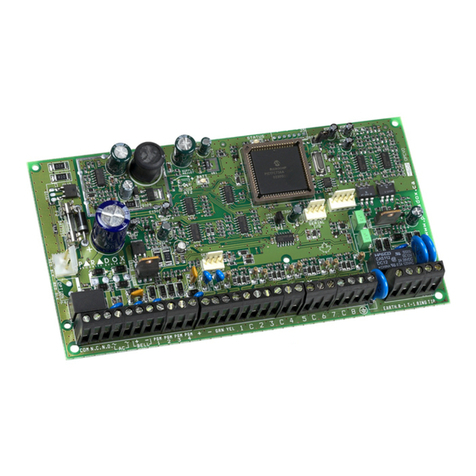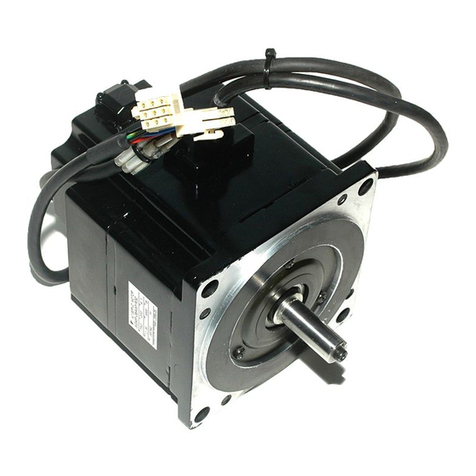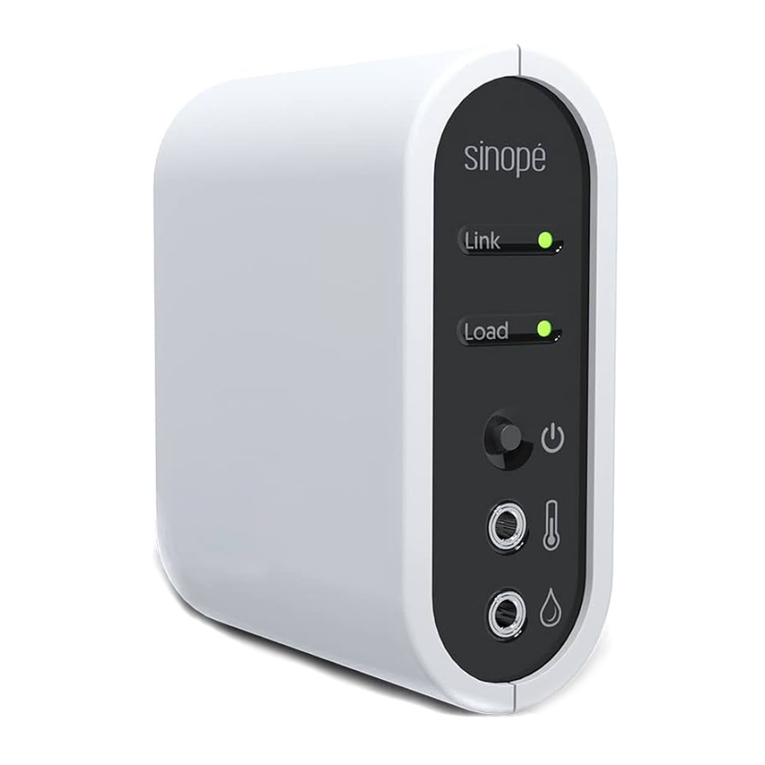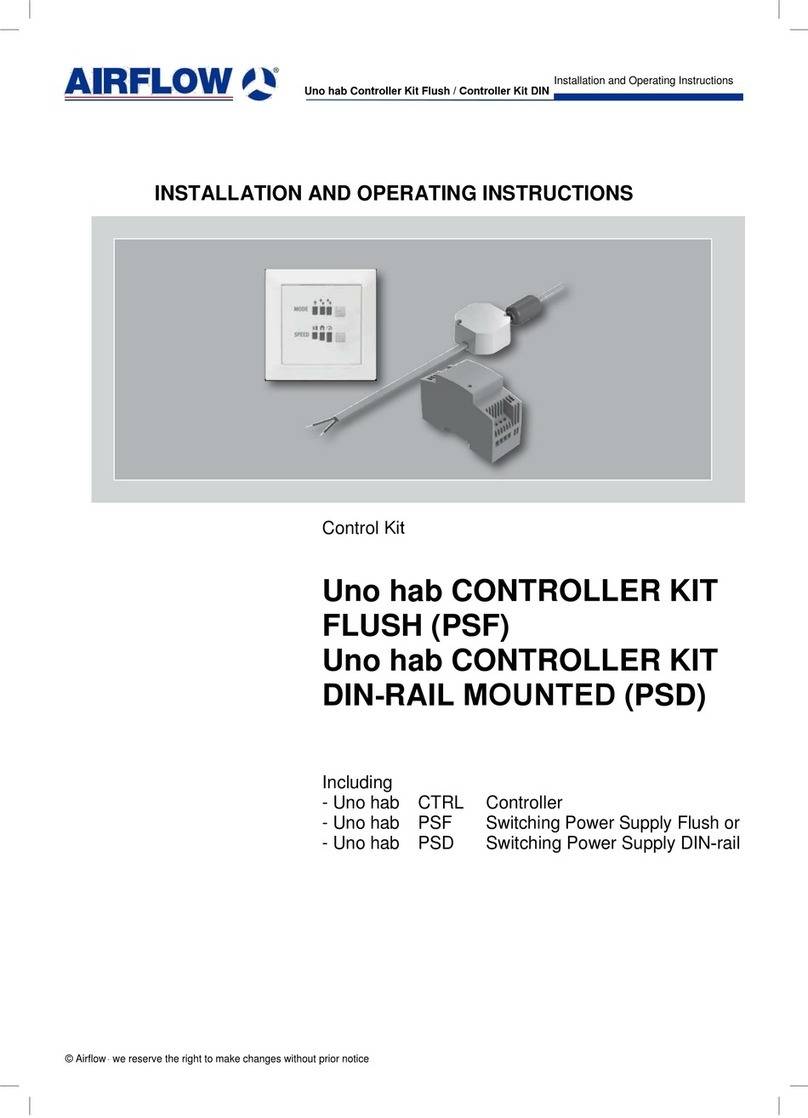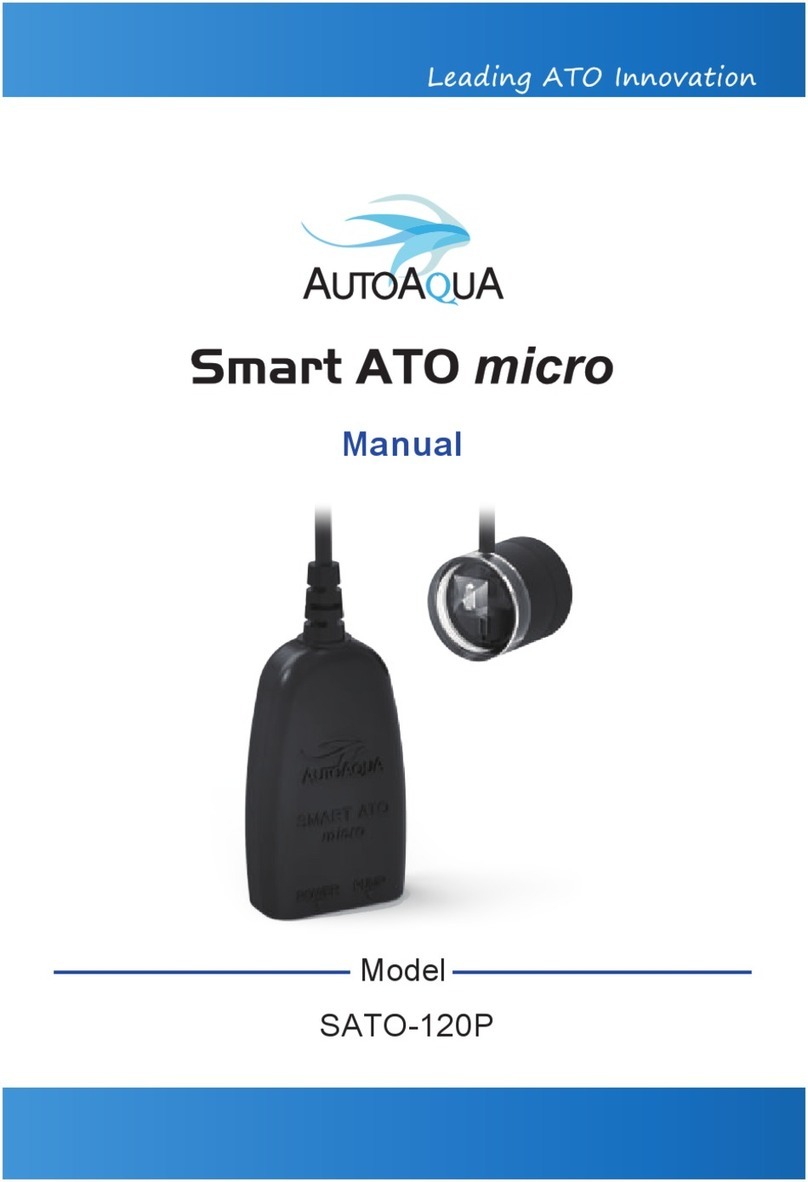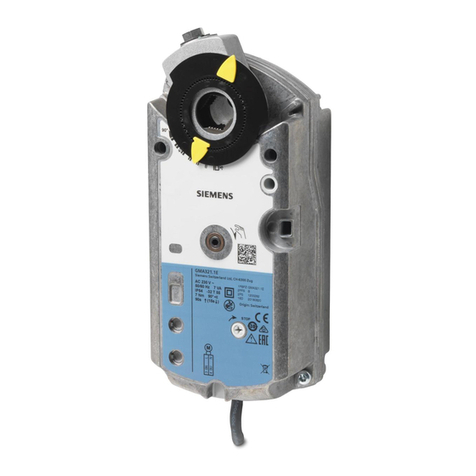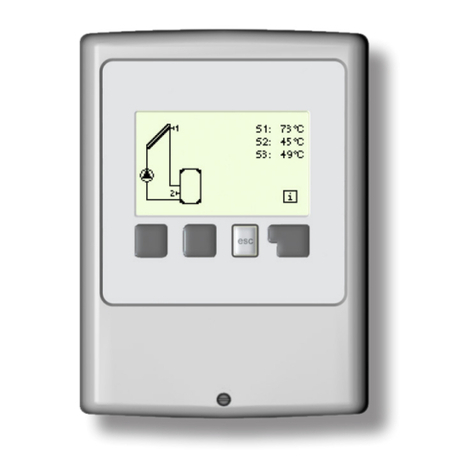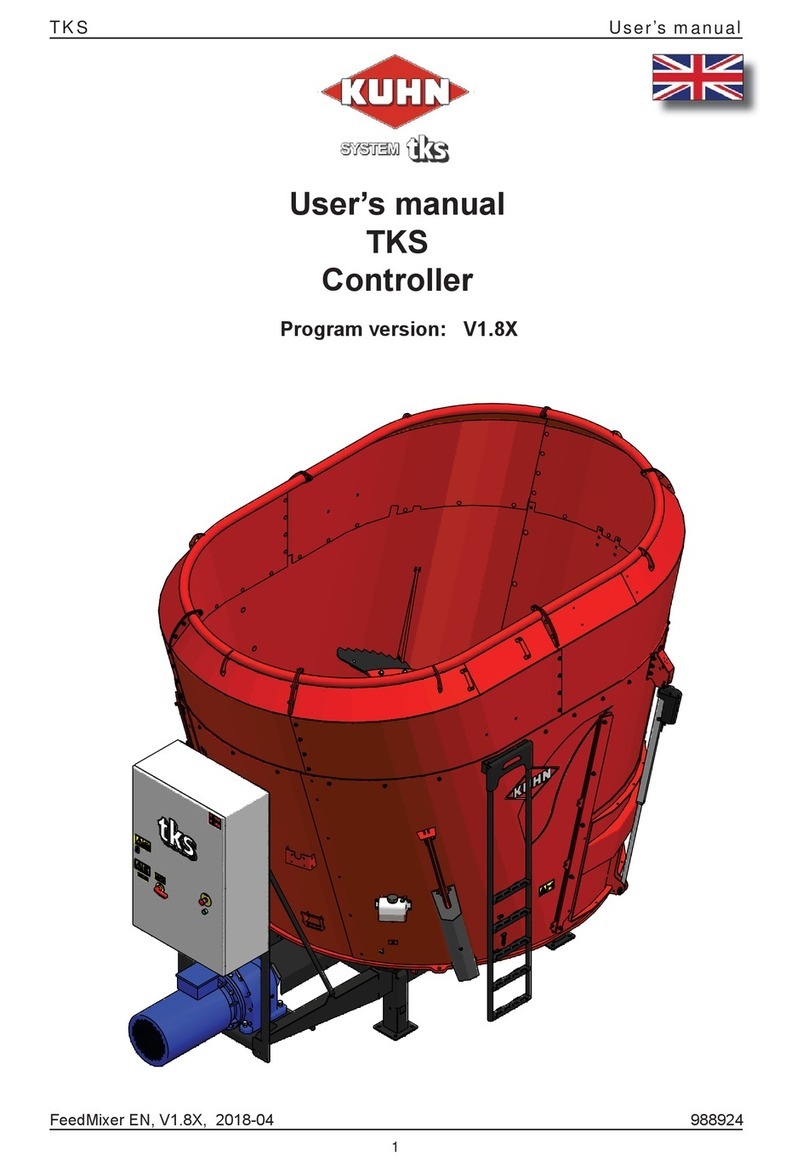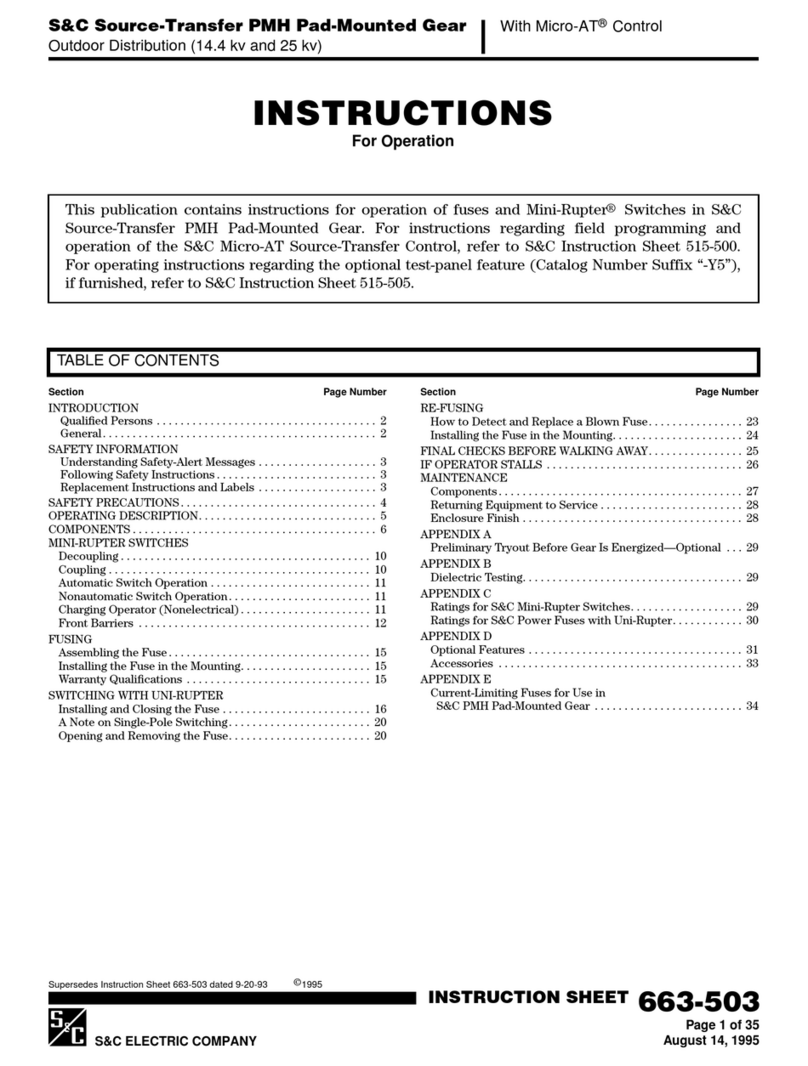
Page 5 of 28
Gamma Vacuum DIGITEL MPCq Users Manual
7. CONTROLLER CONFIGURATION
Following configuration options are specified at order time:
7.1 Input Mains AC Voltage (110Vac vs. 220Vac)
Controller does not have universal power input, thus input mains AC
voltage is part of the controller configuration.
Care must be taken when connecting controller to mains AC voltage
to avoid connecting controller to wrong input voltage.
7.2 Supply configuration
Following controller configurations are valid:
a. One HV supply/channel
b. Two HV supplies/channels
c. One HV supply/channel and one internal TSP or NEG supply
7.3 Output voltage polarity for each HV channel
(positive vs. negative)
In case of positive polarity, output voltage is set to 7kV by default.
In case of negative polarity, output voltage is set to -5.6kV by default.
Output voltage is fixed (linear power supply, transformer tap).
7.4 Type of the HV output connectors
Following are standard HV connector types for J501 - J504:
a. SHV-10kV (matching safeconn connector type is SMB style)
b. Fisher (matching safeconn connector type is mini banana style)
Other HV connector types are available per request.
7. 5 Number of HV output connectors per HV supply
There can be more than one HV output connector tied to the same
HV supply. In such case, connectors are tied in parallel.
Controller can have maximum of 4 HV output connectors in any
configuration. For example, 2 HV output connectors per 1 HV supply.
7.6 Communication interface
Controller comes standard with Serial and Ethernet interface.
Profibus interface is optional.
7.7 Remote TSP control
Controller comes standard with connector J505 CTRL installed.
Connector can be used to connect and control Remote TSP/NEG
Controller.
See rear panel section for connector location.
If internal TSP/NEG supply is installed, connector J505 is not
availble.
8. HV CONTROL / ION PUMP OPERATION
8.1 Prior to using an ion pump
Confirm following:
- Rough pump down to 1x10-4 Torr or less (the lower the better).
1x10-6 Torr is recommended. See Rough Pump user manual for
details.
NOTE: Use the full extent of available rough pumping before
starting an ion pump to extend pump’s lifetime, improve
system ultimate pressure, and get accurate current readings.
- Evacuate the Vacuum System
- Ensure contaminants do not exist in the system.
- If necessary (i.e. ion pump exposed to atmospheric pressure) bake
the ion pump and system into roughing pump to achieve lowest
pressure. See Ion Pump user manual for details.
8.2 Prior to turning on HV and starting an ion pump
Confirm following:
- Verify high voltage cable is installed and connecting controller’s
high voltage (HV) output connector (rear panel, J501-J504) to the
ion pump.
- Verify controller and connected ion pumps are grounded using
redundant ground wire.
- Verify controller’s high voltage output has correct polarity for the
connected ion pump (positive for diode pump, negative for triode
pump).
- Verify safeconn interlock is satisfied.
If high voltage cable has optional safeconn interlock feature, an
additional connector is part of the high voltage cable. Connect
it to controller’s safeconn connector (J401-J404). If high voltage
cable does not have safeconn interlock feature, use safeconn
shorting jumper cable to connect to controller’s safeconn connector
(J401-J404).
Safeconn interlock must be satisfied, otherwise HV cannot be turned
on.
If safeconn interlock is not satisfied, controller will display error 20
(safeconn interlock not satisfied) for that HV channel.
- Verify proper pump size is configured. HV cannot be turned on if
pump size is set to 0. By default pump size is set to 0.
If pump size is set to zero, controller will display error 22 (Pump size
not configured) for that HV channel.
8.3 Turn HV on/off
Turning HV on/off can be achieved:
- Using front panel touchscreen.
- Using remote communication (Serial, Ethernet or Profibus).
- Using rear panel connector J104, Misc. I/O. (Digital Inputs)
